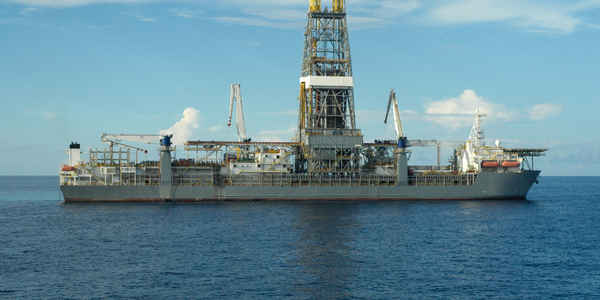公司规模
Mid-size Company
地区
- Europe
国家
- United Kingdom
产品
- DocuWare
- Active Import
- Autoindex
- Content Folder
- Recognition
技术栈
- Barcode Recognition
- Electronic Document Management
- Network Scanners
实施规模
- Departmental Deployment
影响指标
- Productivity Improvements
- Customer Satisfaction
- Cost Savings
技术
- 应用基础设施与中间件 - 数据交换与集成
- 应用基础设施与中间件 - 数据库管理和存储
适用行业
- 建筑与基础设施
- 海洋与航运
适用功能
- 采购
- 销售与市场营销
用例
- 过程控制与优化
- 库存管理
服务
- 系统集成
- 软件设计与工程服务
关于客户
Jack Tighe Ltd. 是一家位于英国林肯郡盖恩斯伯勒的家族企业,已有 50 多年历史。多年来,公司从承接一般工业涂装项目发展到专注于大型钢结构(包括船舶、桥梁和大型建筑)客户,再到现场喷漆和专业“应用涂料”。Jack Tighe 旗下所有公司共有约 350 名员工。Jack Tighe Ltd 负责涉及耐用应用涂料的特殊项目,以其效率、技术能力、高素质员工和领导力而闻名。他们在装饰、工业涂装喷丸或喷砂和专业涂料方面的专业知识已经促成了许多有趣且重要的高价值项目 - 事实上,众所周知,Jack Tighe Ltd 已经完成了一些有史以来最大的涂装项目。
挑战
Jack Tighe Ltd 是一家总部位于英国的工业涂装公司,每天都要处理大量的发票,这让他们苦不堪言。他们使用的流程非常繁琐。采购和销售发票、汇款通知、供应商报表都必须单独复印和分发。必须手动分配编号,盖章,然后返回或转移到其他部门。财务部门每天通过邮寄收到 100 多张发票,必须根据它们所属的 Jack Tighe 公司进行分类。此外,每天需要制作大约 150 张销售发票。通过在为不同客户设置的模板中输入相关信息,将发票输入 Microsoft Excel。创建销售发票后,会分配一个发票编号,然后在打印时进行复制。其中一份副本发送给客户,另一份副本发送到分类账的信用控制部门,在那里以数字形式归档。第三份副本进入工作文件。收到供应商的汇款通知和对账单后,会按字母顺序将其归档到不同的文件下,例如信用控制或客户姓名。每当客户打电话询问付款或订单状态时,都必须将文件带到柜台。只有在查找相关对账单后,才会回电给客户并回答他们的疑问。
解决方案
解决方案是实施文档管理系统 DocuWare,以简化发票处理。现在,只需单击鼠标即可检索所有帐户记录,并可随时在电子档案中查阅。将发票副本归档到活页夹中已成为过去。通过条形码识别,人们可以更快地将发票存储在 DocuWare 中,因为系统可以从报表内容中捕获索引条件。该解决方案还提供了加快数据输入、自动存储电子邮件消息和确保网络扫描仪无缝集成的空间。现在,通过应用 DocuWare 解决方案,Jack Tighe Ltd. 可以依靠无错误的文档存储,文件错放已成为过去。共有九名员工使用 DocuWare。该解决方案还与现有的会计程序无缝兼容。增加了两台扫描仪以方便扫描。整个设置仅用了 7.5 天,一个新的工作流程诞生了。收到的所有新采购发票都带有一个带序列号的条形码标签。然后使用识别模板将发票扫描到 DocuWare 中以索引和存储文档。独特的条形码索引字段可在债权人分类账中定位交易,并在 DocuWare 中提取该特定记录的附加索引信息。然后,发票将转交给正确的人员进行批准,并在批准处盖上电子印章(同时在相关字段中添加工作编号),然后自动转回会计部门进行付款。因此,个人用户可以依靠电子方式接收他们的工作量,而无需进行大量复印。
运营影响
数量效益

Case Study missing?
Start adding your own!
Register with your work email and create a new case study profile for your business.
相关案例.

Case Study
IoT System for Tunnel Construction
The Zenitaka Corporation ('Zenitaka') has two major business areas: its architectural business focuses on structures such as government buildings, office buildings, and commercial facilities, while its civil engineering business is targeted at structures such as tunnels, bridges and dams. Within these areas, there presented two issues that have always persisted in regard to the construction of mountain tunnels. These issues are 'improving safety" and "reducing energy consumption". Mountain tunnels construction requires a massive amount of electricity. This is because there are many kinds of electrical equipment being used day and night, including construction machinery, construction lighting, and ventilating fan. Despite this, the amount of power consumption is generally not tightly managed. In many cases, the exact amount of power consumption is only ascertained when the bill from the power company becomes available. Sometimes, corporations install demand-monitoring equipment to help curb the maximum power demanded. However, even in these cases, the devices only allow the total volume of power consumption to be ascertained, or they may issue warnings to prevent the contracted volume of power from being exceeded. In order to tackle the issue of reducing power consumption, it was first necessary to obtain an accurate breakdown of how much power was being used in each particular area. In other words, we needed to be able to visualize the amount of power being consumed. Safety, was also not being managed very rigorously. Even now, tunnel construction sites often use a 'name label' system for managing entry into the work site. Specifically, red labels with white reverse sides that bear the workers' names on both sides are displayed at the tunnel work site entrance. The workers themselves then flip the name label to the appropriate side when entering or exiting from the work site to indicate whether or not they are working inside the tunnel at any given time. If a worker forgets to flip his or her name label when entering or exiting from the tunnel, management cannot be performed effectively. In order to tackle the challenges mentioned above, Zenitaka decided to build a system that could improve the safety of tunnel construction as well as reduce the amount of power consumed. In other words, this new system would facilitate a clear picture of which workers were working in each location at the mountain tunnel construction site, as well as which processes were being carried out at those respective locations at any given time. The system would maintain the safety of all workers while also carefully controlling the electrical equipment to reduce unnecessary power consumption. Having decided on the concept, our next concern was whether there existed any kind of robust hardware that would not break down at the construction work site, that could move freely in response to changes in the working environment, and that could accurately detect workers and vehicles using radio frequency identification (RFID). Given that this system would involve many components that were new to Zenitaka, we decided to enlist the cooperation of E.I.Sol Co., Ltd. ('E.I.Sol') as our joint development partner, as they had provided us with a highly practical proposal.

Case Study
Splunk Partnership Ties Together Big Data & IoT Services
Splunk was faced with the need to meet emerging customer demands for interfacing IoT projects to its suite of services. The company required an IoT partner that would be able to easily and quickly integrate with its Splunk Enterprise platform, rather than allocating development resources and time to building out an IoT interface and application platform.

Case Study
Bridge monitoring in Hamburg Port
Kattwyk Bridge is used for both rail and road transport, and it has played an important role in the Port of Hamburg since 1973. However, the increasing pressure from traffic requires a monitoring solution. The goal of the project is to assess in real-time the bridge's status and dynamic responses to traffic and lift processes.

Case Study
Drill ship power challenge: hybrid solution solves distribution issues
Aspin Kemp & Associates (AKA), a manufacturer of electrical power and control systems headquartered in Montague, PEI, encountered one with its hybrid power initiative, the first hybrid drill floor destined for installation on ultra-deepwater drill ships operated by Transocean, Swiss offshore drilling contractors. Since on-site modification was impossible and scrap recycling of any modifications was unacceptable, the enclosures had to arrive ready-to-install.

Case Study
Bellas Landscaping
Leading landscaping firm serving central Illinois streamlines operations with Samsara’s real-time fleet tracking solution: • 30+ vehicle fleet includes International Terrastar dump trucks and flatbeds, medium- and light-duty pickups from Ford and Chevrolet. Winter fleet includes of snow plows and salters.








